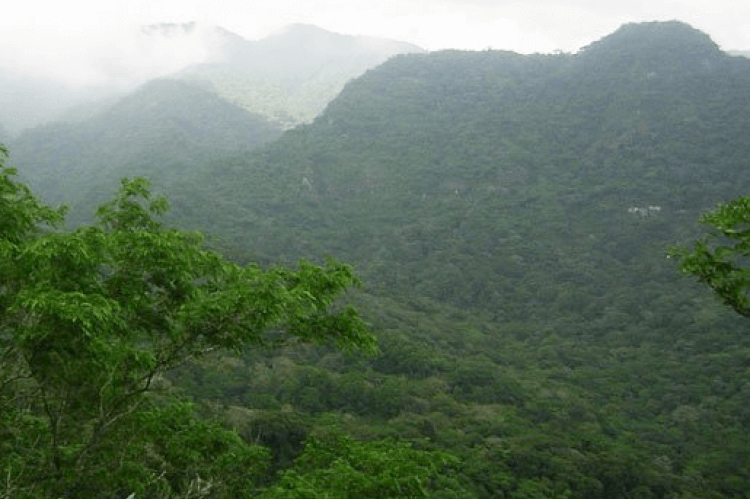El Imposible National Park: An Oasis of Biodiversity in El Salvador
Nestled in the mountains of western El Salvador, El Imposible National Park is a sanctuary of natural beauty and biodiversity. This protected expanse of wilderness offers a glimpse into the country's rich ecological heritage, showcasing a diverse array of ecosystems, flora, and fauna.
El Imposible National Park: An Oasis of Biodiversity in El Salvador
Nestled in the rugged mountains of western El Salvador, El Imposible National Park stands as a sanctuary of breathtaking natural beauty and unparalleled biodiversity. This vast expanse of protected wilderness, spanning over 5,000 hectares (12,000 acres), offers a rare glimpse into the country's rich ecological heritage, showcasing a diverse array of ecosystems and a wealth of flora and fauna found nowhere else on Earth.
Geographic Setting
A Mountainous Terrain
El Imposible National Park is situated within the Sierra Madre de Chiapas mountain range in the Ahuachapán and Santa Ana departments of western El Salvador, within the Sierra Madre de Chiapas mountain range. This rugged terrain, characterized by steep slopes, deep ravines, and towering peaks, creates a unique and challenging environment that has shaped the park's remarkable biodiversity.
Altitudinal Gradients
The park's elevation ranges from 300 meters (984 feet) above sea level in the lower valleys to 1,450 meters (4,757 feet) at its highest point, the Cerro Verde. This altitudinal gradient gives rise to various microclimates and ecosystems, each harboring its unique plant and animal life assemblage.
Ecosystems and Biodiversity
A Tapestry of Life
El Imposible National Park is a true tapestry of life, woven together by a mosaic of distinct ecosystems that coexist within its boundaries. From the lush cloud forests that cloak the highest peaks to the dry tropical forests that thrive in the lower elevations, this park is a testament to the incredible diversity of Central American landscapes.
Flora
The park's plant life is nothing short of extraordinary. It includes over 700 species of vascular plants, including numerous endemic species found nowhere else on the planet. Among the most notable residents are the majestic oak trees that dominate the cloud forests, the vibrant bromeliads that cling to the branches, and the delicate orchids that grace the forest floor.
Fauna
El Imposible National Park is also a haven for a remarkable array of animal life. Its dense forests and diverse habitats provide refuge for over 300 species of birds, including the resplendent quetzal, El Salvador's national bird. Mammals such as the margay, jaguarundi, and ocelot prowl these ancient woodlands, while many reptiles, amphibians, and invertebrates add to the park's astonishing biodiversity.
Conservation Efforts
A Beacon of Hope
El Imposible National Park is a hope for conservation efforts in Central America in a region where deforestation and habitat loss have severely damaged natural landscapes. Established in 1989, the park has been a cornerstone of El Salvador's protected area network, safeguarding its precious ecosystems and the myriad of species that call them home.
Ecotourism and Sustainable Development
The park's administration has embraced a philosophy of sustainable development, recognizing the importance of balancing conservation efforts with the needs of local communities. Through well-managed ecotourism initiatives, visitors can explore the park's natural wonders while contributing to the economic well-being of surrounding communities and supporting the ongoing preservation of this ecological treasure.
Challenges and Opportunities
Threats and Mitigation Strategies
Despite the park's protected status, El Imposible National Park faces numerous threats, including illegal logging, poaching, and the encroachment of human settlements. Park authorities have implemented strategies to mitigate these challenges, such as increased patrol efforts, community outreach programs, and promoting sustainable livelihood alternatives for local populations.
Research and Education
El Imposible National Park is an invaluable outdoor classroom and research site that attracts scientists, students, and nature enthusiasts worldwide. Ongoing research projects aim to unravel the intricate web of life within the park's boundaries. At the same time, educational programs seek to foster a deeper appreciation for El Salvador's natural wonders and the importance of their conservation.
Conclusion
El Imposible National Park is a true jewel in the crown of Central America's protected areas. It serves as a living testament to nature's resilience and the indomitable spirit of conservation efforts. In navigating the challenges of the modern world, the park reminds us of the vital role that protected areas play in safeguarding the planet's biodiversity and ensuring a sustainable future for future generations.
